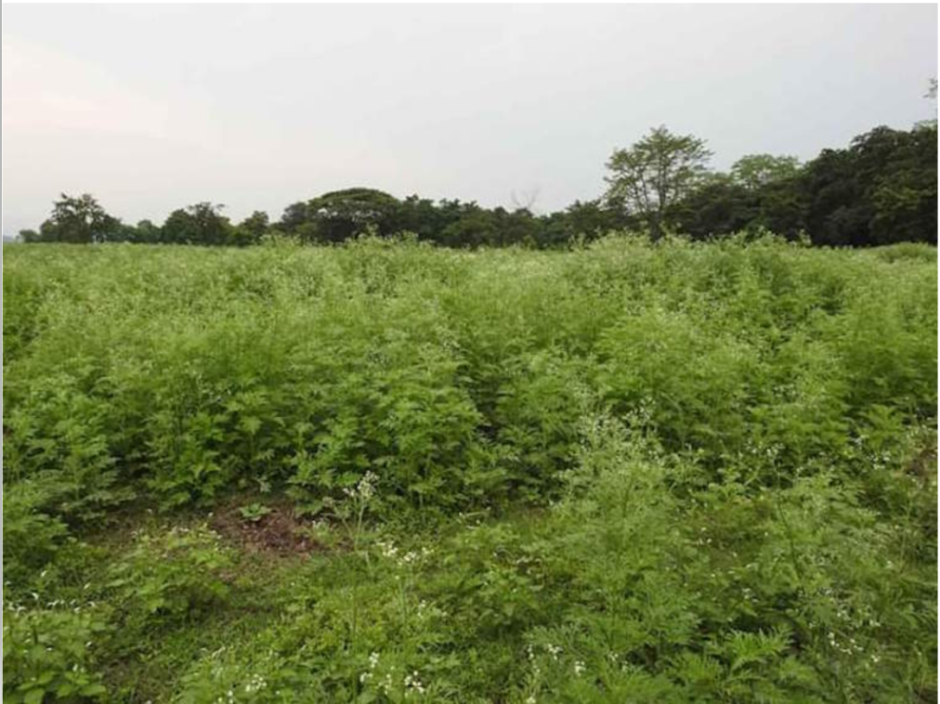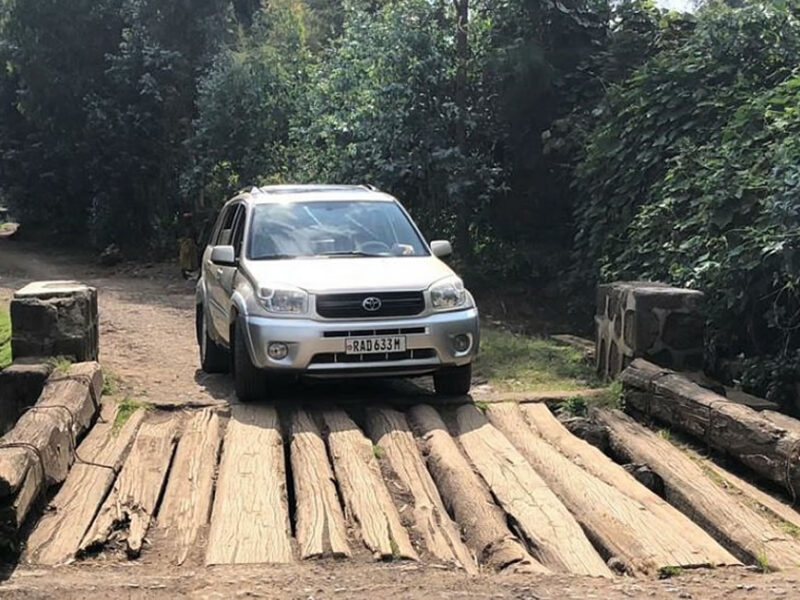
Invasive Alien Plants (Congress Weed)
Many plant species have a strong ability to grow in similar situations but away from their native habitats. The result is that many plants are now found in places where they did not originate. This process of the global distribution of plants has been happening for millions of years. In the past 1000 years – as people have dispersed across the globe – this has speeded up, escalating still further over the past 300 years as modern world travel has developed.
Plants have been distributed as crop plants and ornamentals to foreign lands, often displacing the local flora with negative consequences. In many, if not most, cases of invasive alien plants that have originated from horticulture are plants selected by gardeners for the same qualities that make them potentially invasive. Some of these characteristics are rapid growth, early maturity, large quantities of seeds that are easily dispersed, the ability to out-compete other plants and diseases, and pest resistance.
Like many other parts of the world, Africa has also been affected by the global distribution of plants. With its diverse natural environment, Uganda provides habitats suitable for many species ranging in origin from the tropics to Mediterranean-type environments and deserts. These plants are termed ‘invaders’ because they spread and displace the indigenous plants. The question then is ‘Why are invasive alien plants such a problem?’ Apart from displacing the natural flora and therefore impacting negatively on biodiversity they also use more water than the better-adapted natural flora.
They also intensify wildfires should these occur. These negative impacts call for concerted action for the control of these invasive alien plants. Some of the most widespread offending species in random order are Lantana Camara (Lantana), Solanum Mauritianum (Bugweed), and Parthenium Hysterophorus (Congress Weed or Parthenium weed).
Parthenium weed (Parthenium hysterophorus) Common Names:
Parthenium Weed, Congress Weed, Bitter Weed, Feverfew, False Ragweed, Whitetop, Carrot Grass, Santa Maria, Karottenkraut (German), Camomille Balais (French-Reunion). Parthenium weed is regarded as one of the worst weeds in Uganda because of its invasiveness, potential for spread, and economic and environmental impacts. It has a serious impact on the pastoral industry, costing farmers and graziers in reduced production and increased management costs. Some people suffer severe allergic reactions to the plant or its pollen; prolonged contact can cause asthma, acute dermatitis, and respiratory problems. Parthenium weed is toxic to cattle, and meat from livestock that eats the weed can be tainted. It also threatens the biodiversity of native grasslands in Uganda.
Mature plants are normally about 1 m tall
Description
Parthenium weed is native to the subtropics of Central and South America. It is a fast-maturing annual with a deep taproot and an erect stem that becomes woody with age. It may eventually reach a height of 2m. Its leaves are pale green, branched, and covered with soft fine hairs. The small white flowers (4mm across) have five distinct corners and grow on the stem tips. Its large and persistent soil seed bank, fast germination rate, and ability to undergo dormancy make it well adapted to semi-arid environments. It also releases chemicals that inhibit the germination and growth of pasture grasses and other plants.
The distinctive branched leaves are covered with soft, fine hairs.
How it spreads
Parthenium weed can produce large quantities of seed, up to 100,000 per plant. More than 340 million Parthenium weed seeds per hectare can be present in the surface soil, compared to 120,000 native grass seeds. The seed is easily spread by vehicles, machinery, and animals, and in pasture seed, stock feed, and water. Most long-distance spread is in produce, vehicles, and farm machinery. It can also be spread by flooding and by animals.
Where it grows
Parthenium weed grows best on alkaline, clay-loam to heavy black clay soils but tolerates a wide variety of soil types. It aggressively colonizes areas with poor groundcover and exposed soil such as wastelands, roadsides, and overgrazed pastures. It does not usually become established in undisturbed vegetation or vigorous pastures – drought and subsequently reduced pasture cover create the ideal opportunity forParthenium weed to establish. A flooded country is also very prone to Parthenium weed.
Lifecycle stages
With the right conditions (rain, available moisture, mild soil, and air temperatures), Parthenium weed can grow and produce flowers at any time of the year. In a good season, four or five generations may emerge. In summer, if plants are stressed (e.g. due to lack of water), Parthenium weed can complete its life cycle in four weeks. Buried seeds have been found to last much longer than seeds on the soil surface, and a significant proportion can still germinate after eight to ten years. Parthenium weed is best suited to areas with an annual rainfall greater than 500 mm. Parthenium weed can flower all year round
Control Methods:
The aliens described here, and indeed many others, are invasive because they are difficult to control. Successful control measures have been developed but in many cases only after detailed research and good results can only be expected if attention is paid to detail. For example, some methods are specific to a particular weed or growth form.
Hand pulling
Hand pulling is effective where infestations are small and the invaders are shallow-rooted.
Mechanical removal
Ploughing the weed in before plants reach the flowering stage and then establishing pasture may be effective. Before crops are planted, Parthenium weed is normally ploughed in, or pre-emergent herbicides can be used.
Burning
Burning is not a useful control strategy for Parthenium. However, research suggests that burning for other purposes (eg woody weed control) will not result in an increased infestation of Parthenium so long as the pasture is allowed to recover before stock are introduced. Stocking of recently burnt areas known or suspected to contain Parthenium weed decreases competition, ultimately creating a more serious infestation. Permits may be required to burn, so check with your local council. While Parthenium weed is certainly something landholders should try and prevent invading their properties, it can be managed. Although it is unlikely to totally eradicate
Parthenium weed, we must live with it and manage it appropriately.
Cuttings
Nearly all invaders will coppice if cut once, but repeated cutting during the growing season causes depletion of root reserves eventually resulting in death. If the terrain permits the second and subsequent cuts can be done with a mower. Such treatment favors grass which will then be able to out-compete the weeds and assist in their elimination.
The problem of invasive plants is large, and it requires active public and private participation to combat this ‘growing’ threat. Agricultural landowners need to familiarise themselves with those species that pose a threat to their own land and eradicate them. The gardening public, in turn, should be aware of those invasive alien plant species that they may have on their suburban properties and remove them.
Key points
• Invading alien plants are a major conservation threat.
• Parthenium weed can germinate, grow, mature and set seed in four weeks.
• Parthenium weed is toxic to stock and contact with Parthenium weed, particularly its pollen, can cause allergic reactions such as dermatitis, hay fever, and asthma in people.
• The best way to prevent an allergic reaction to Parthenium weed is to avoid contact with it, especially breathing pollen from flowering plants.
• Pay close attention to property hygiene.
• Weed seeds are spread very easily by vehicles, machinery, stock, grain, and fodder.
• Use mechanical, chemical, and biological control and grazing to manage Parthenium weed.
• Control measures usually require a carefully planned and implemented program.
• Obtain advice on chemical control from your local herbicide representative.
• Follow-up operations are essential for complete success.


